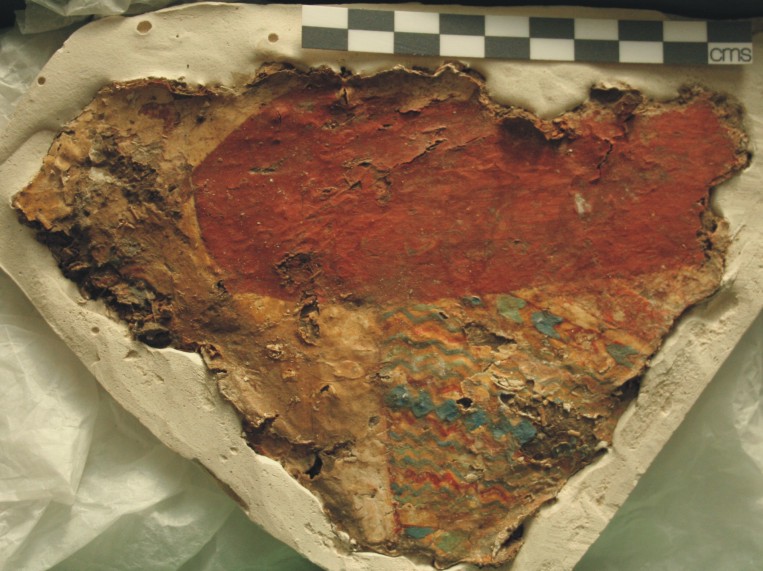W802
{loadposition share}
W802 Akhenaten’s elbow?
 This piece of painted wall plaster comes from the North Riverside Palace at Amarna. The North Riverside Palace was possibly the principal royal residence at Amarna (Kemp 2006, 284). There is a colour facsimile showing this piece of plaster when excavated in Weatherhead (2007, col. pl. 13). If you compare this with the item today you will see that there has been some damage between the date when it was excavated and the item today. This fragment was one of the first to be excavated from Amarna (Pendlebury 1931, 242).
This piece of painted wall plaster comes from the North Riverside Palace at Amarna. The North Riverside Palace was possibly the principal royal residence at Amarna (Kemp 2006, 284). There is a colour facsimile showing this piece of plaster when excavated in Weatherhead (2007, col. pl. 13). If you compare this with the item today you will see that there has been some damage between the date when it was excavated and the item today. This fragment was one of the first to be excavated from Amarna (Pendlebury 1931, 242).
The frieze from which this piece of plaster was excavated was reconstructed by Laver (Weatherhead 2007, pl. 44). This suggests that our piece depicts part of the lower arm of a person, probably Akhenaten, and wearing of an ornate sash tied at the waist. The elaborate sash would normally be associated with a male kilt. Laver reconstructed this as a scene of Akhenaten in his chariot but it may be that it is part of an offering scene (Weatherhead 2007, 249).
While to some extent the king was always considered a divinity, a god on earth, this aspect was accentuated during the Amarna Period. The Hymn to the Aten states that Akhenaten is the only son of the Aten. Akhenaten and his wife Nefertiti were equated with the gods Shu and Tefnut.
Further references
Kemp, B.J. 2006.Ancient Egypt. Anatomy of a Civilisation. London and New York: Routledge.
Pendlebury, J.D.S. 1931. Preliminary Report of Excavations at Tell el-‘Amarna, Journal of Egyptian Archaeology 17, 233-234.
Weatherhead, F. 2007. Amarna Palace Paintings. London: Egypt Exploration Society.